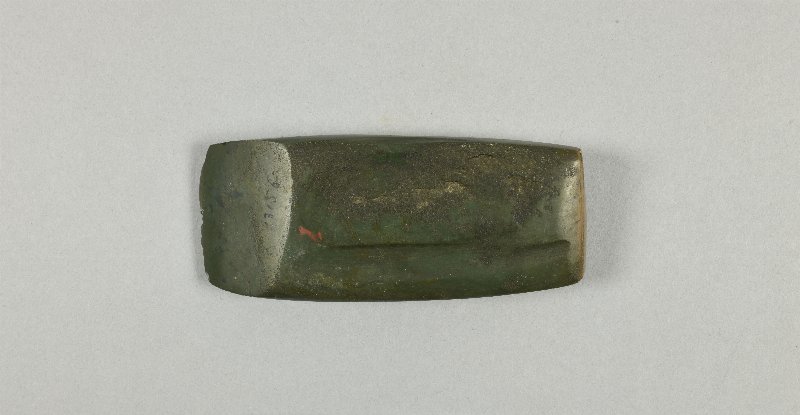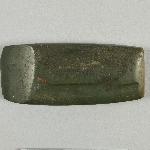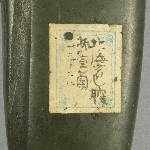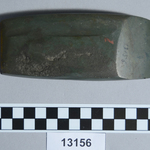| Object Number | 13156 |
| Current Location | Collections Storage |
| Culture | Jomon (uncertain) | Yayoi (uncertain) | Japanese (uncertain) | Ainu (uncertain) |
| Provenience | Japan | Hokkaido | Muroran |
| Creator | Unknown |
| Period | Jomon (uncertain) | Yayoi (uncertain) |
| Date Made | Jomon - Yayoi |
| Section | Asian |
| Materials | Stone |
| Technique | Polished |
| Inscription Language | Japanese Language | Japanese Language |
| Description | Finely polished adze. Rectangular in shape. Cutting edge is sliced diagonally. Several incised streak impressions run lengthwise on three sides. Stone is dark green but brown at handle end. Highly polished surface with some pock marks. This highly polished adze from Muroran City in Hokkaido is unique from the rest of the polished adzes in the University of Pennsylvania Museum collection. First of all it is squared off at the top whereas the rest of the adzes have a rounded end. Second, the cutting edge is formed in an entirely different manner. As opposed to both sides being ground down, usually in a gently curving slope, to meet together, this pieces has been sliced from one side to the other forming a sharply angled cutting edge. Third, there are long grooves carved lengthwise on three sides of the tool. Finally, the highly polished gray-green stone with brown at the end is unlike any of the other examples. |
| Length | 14.2 cm |
| Width | 5.8 cm |
| Thickness | 2.3 cm |
| Credit Line | Exchange with the Japanese Commissioner, World's Columbian Exposition, 1893 |
| Other Number | 2 or 7? - Other Number |
Report problems and issues to digitalmedia@pennmuseum.org.






